Travelogue: First Steps On The Silk Road
This is Dongbu Village. Picturesque, placid, well off the beaten path. A special place for those who know to search it out.
[Author’s Note: Because we’ve been in and around Quanzhou the past few weeks, and Quanzhou was a hub of the maritime Silk Road, I thought it would nice to share this April 2024 visit to the arguable first “steps” of the Jingdezhen porcelain Silk Road.]
Dongbu has a special claim to historical significance that we just had to see, if only to say that we were there. Across this narrow walking bridge is a tiny wharf, and there, that was where ships were loaded with the raw materials of special Jingdezhen porcelain, mined from the surrounding Gaoling hills, to be sailed down river to the design and manufacturing cluster, making this unassuming village the first step of the famed sea route of the Silk Road. From here, China’s porcelain and ceramic goods and masterpieces shipped all around China and the world. Quite cool.

If you want to know more about the subject, I can recommend The Silk Roads by Peter Frankopan, a great read covering the impact and evolution of The Silk Road throughout history from varying perspectives. He seems like a genuinely nice and approachable person, if that matters to you as it does to me. If that was all Dongbu had to offer, I would have been satisfied. After all, this was one stop on a day tour we had hired a driver for. But Dongbu has tricks and ways to surprise and delight.
Walking back from the wharf, we passed a weathered door welcoming visitors to the MUSEUM. I cannot resist a museum. We learned about the geological processes that made Gaoling Hills the rich source of kaolinite that is so crucial to the highest quality Jingdezhen porcelain. Today, kaolin is finding uses in all sorts of diverse industries, from atomic energy, electronics, medicine, building material, and much more. Wonderfully, this is all explained in English, in a museum that cannot get too many foreign visitors. I really appreciated this kind attention to detail.
One final treat, and this pushed Dongbu to the very top, voted Most Memorable by my youngest son. A lunch prepared by a local family that serves as a restaurant for people passing through. That, and the narrow bridge that roused just enough nervousness without being dangerous. My boys are Big City Boys, so this country-livin’ is a vivid experience they won’t forget.
For me, the more modern buildings of the 1980–90s on this lunch side of the river were a flashback to my days in the South China manufacturing cluster. White small tile exteriors, concrete construction, three or four floors. These were the homes, dormitories, and often the factories where products of all kinds were churned out as fast as possible, to feed a world hungry for stuff, and dollars. All of that is gone now, resurfaced with superhighways, skyscrapers, golf courses, and high rise housing. The dirty manufacturing towns of the south became newly minted Tier 1 megacities. But if you travel far enough, hours by train and car, and hundreds of years back, you can find remembrances of times past and connection in the lingering shadows of an older center of human creativity and industriousness.





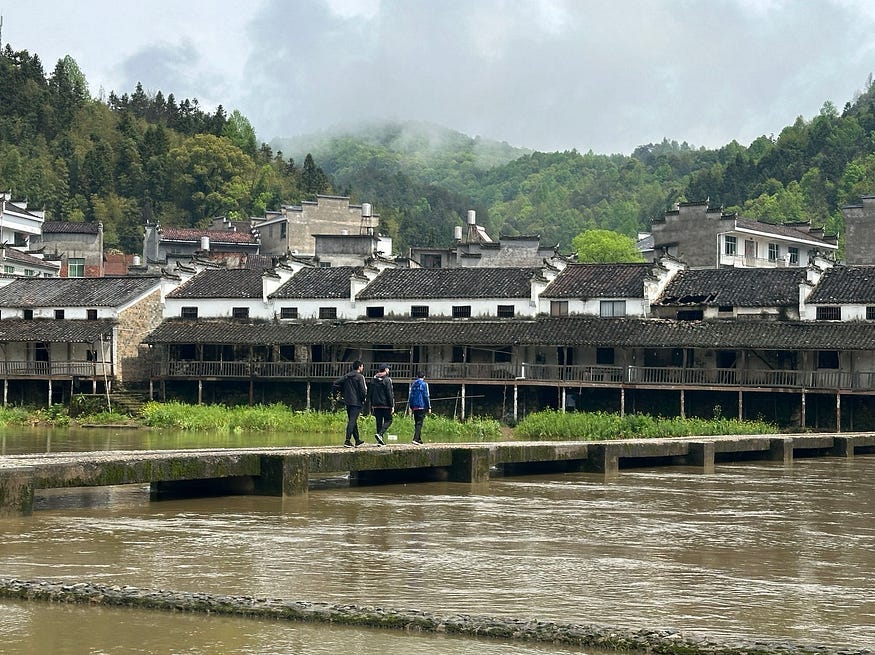
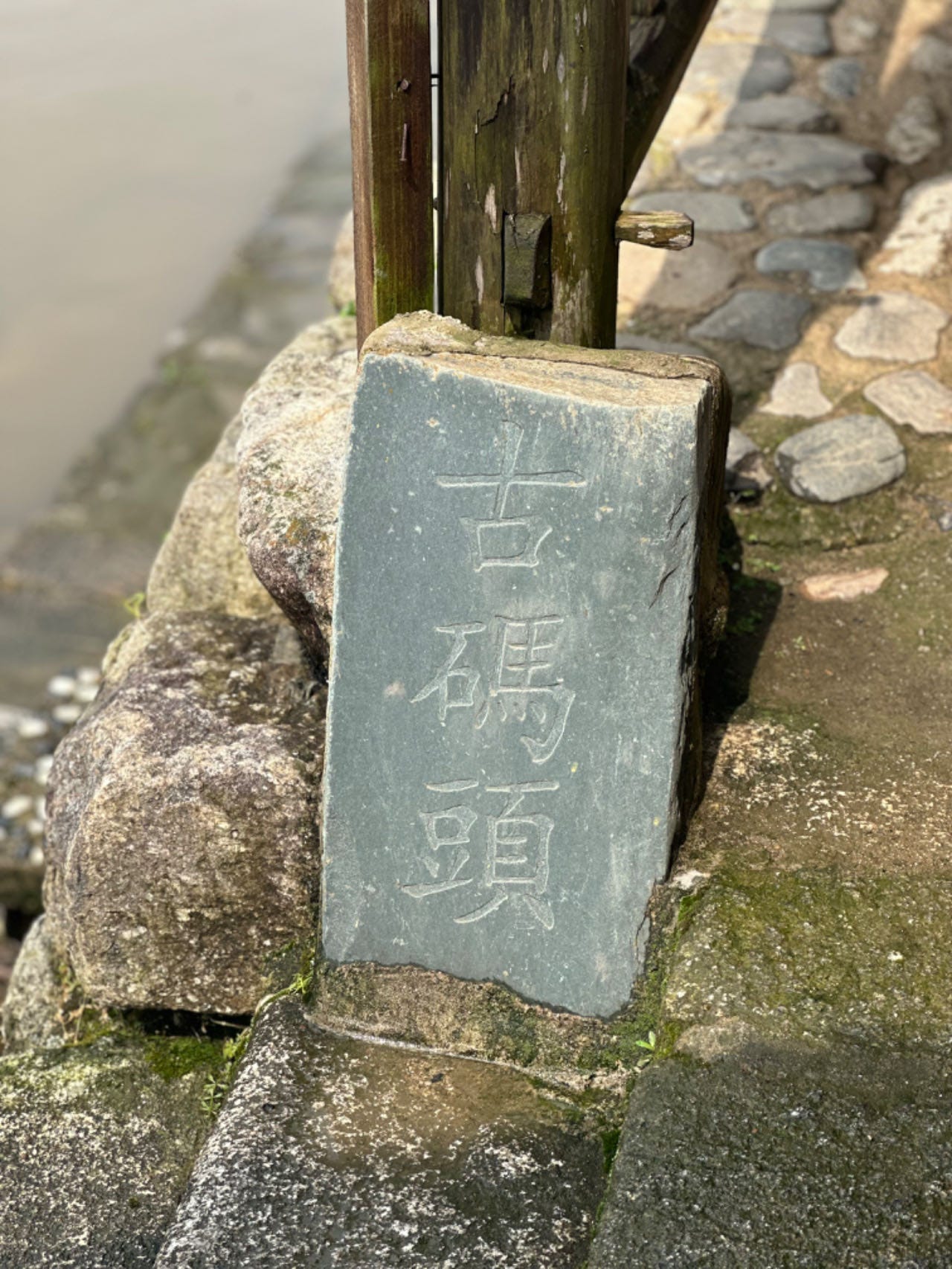

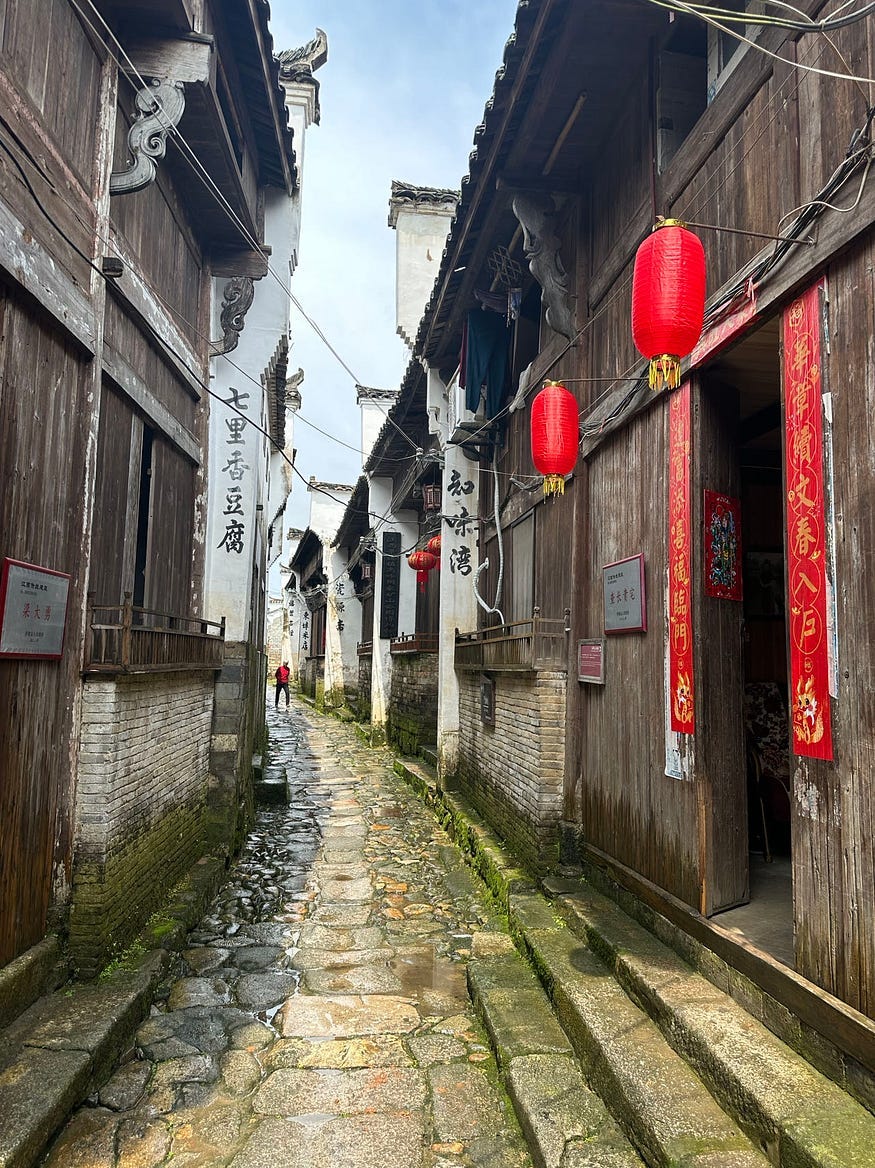
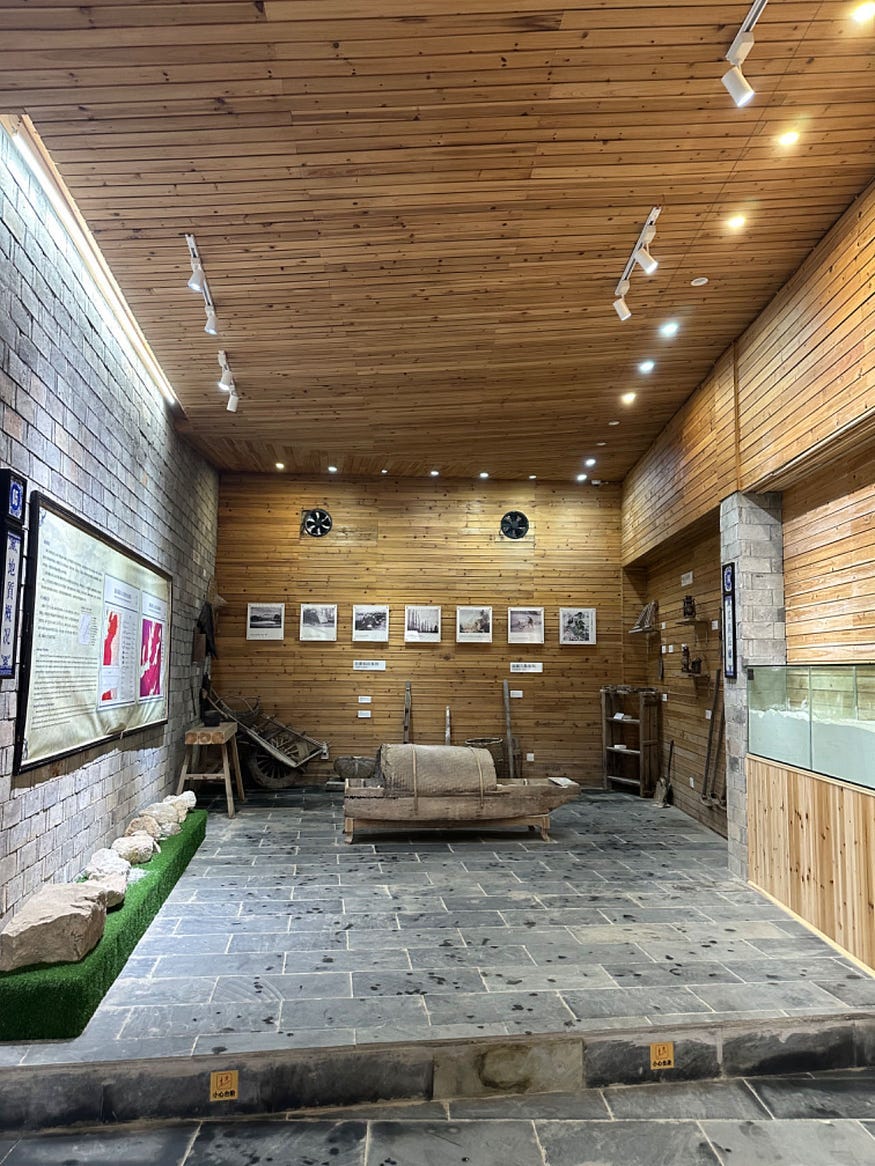

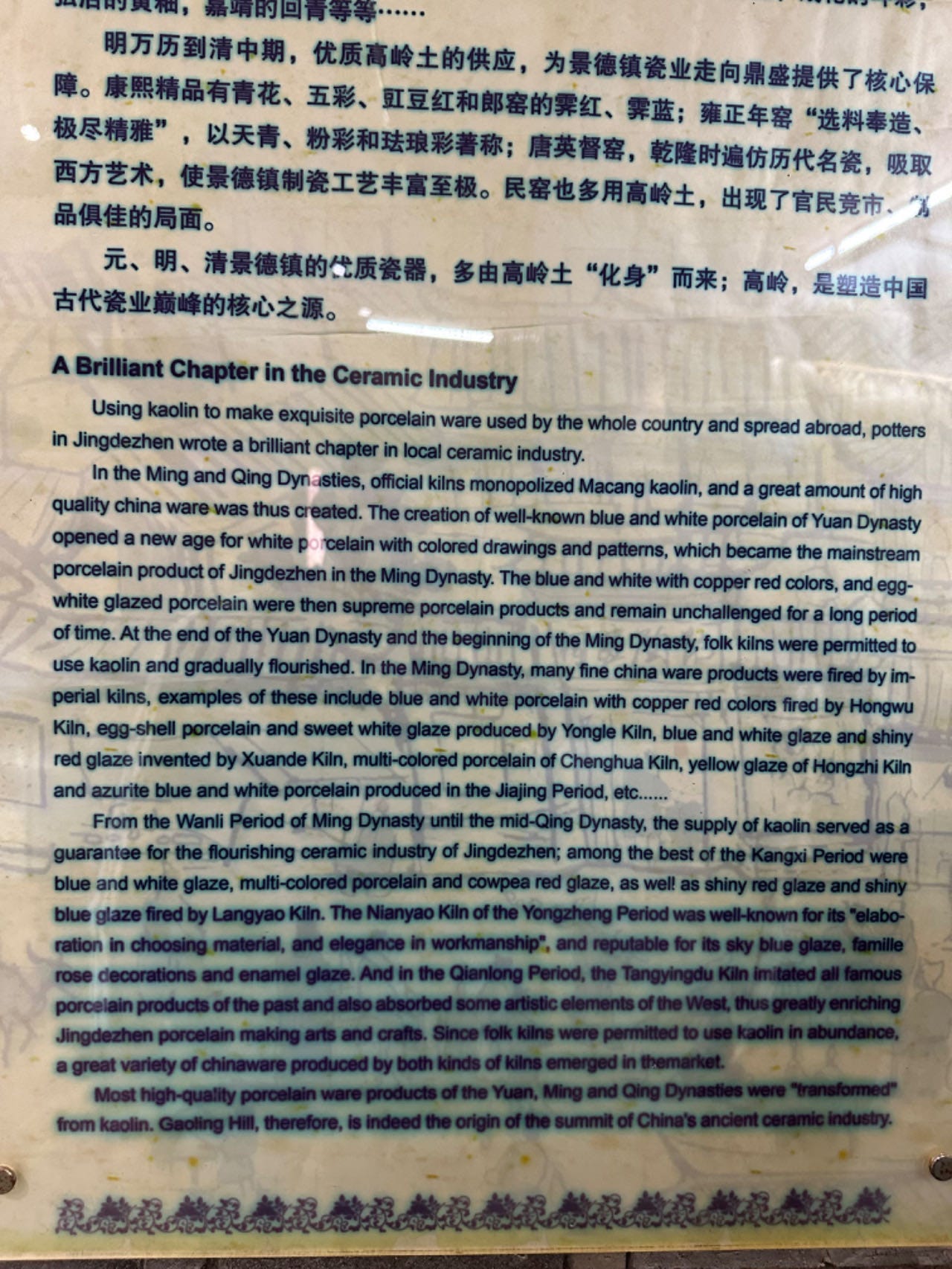
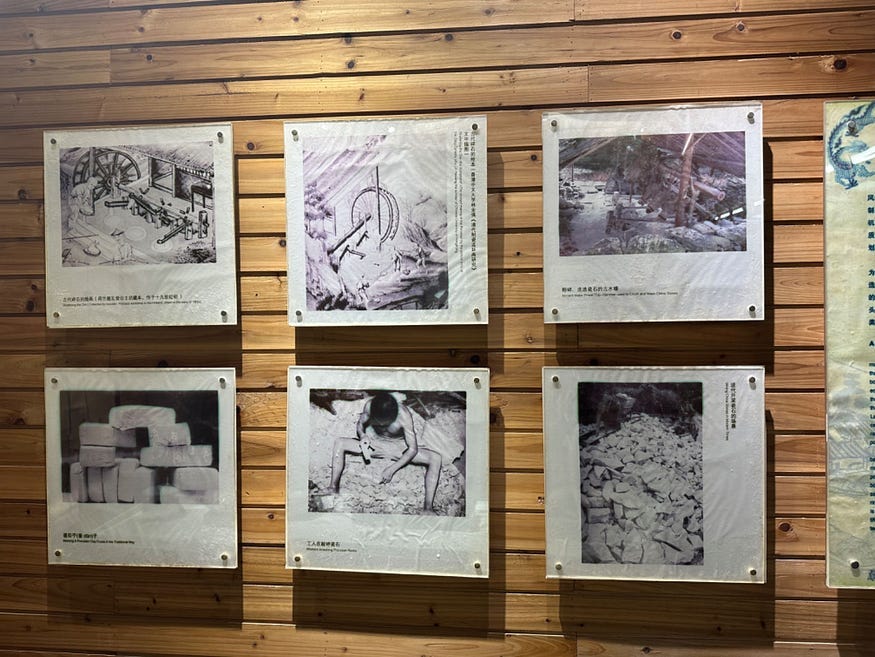
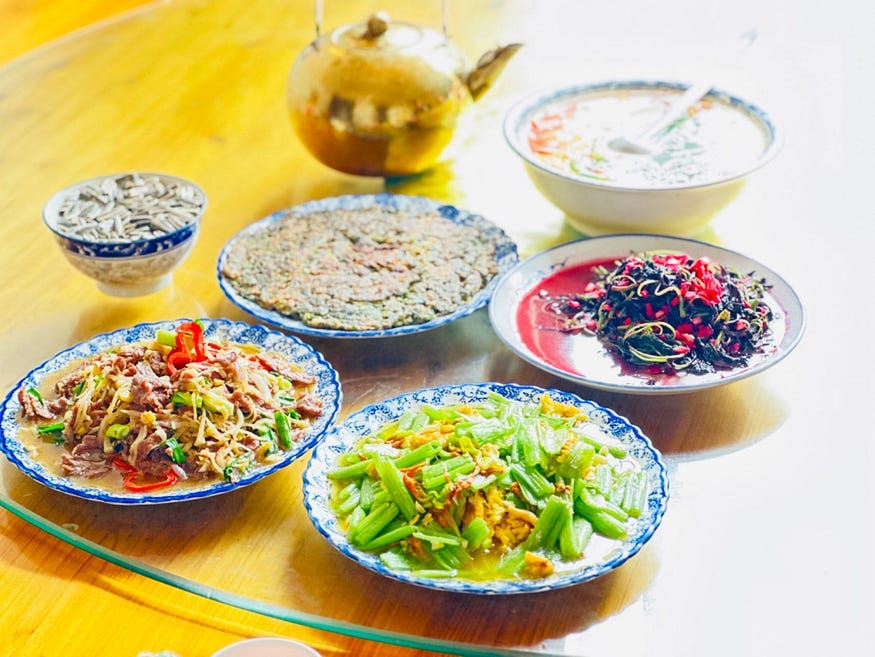

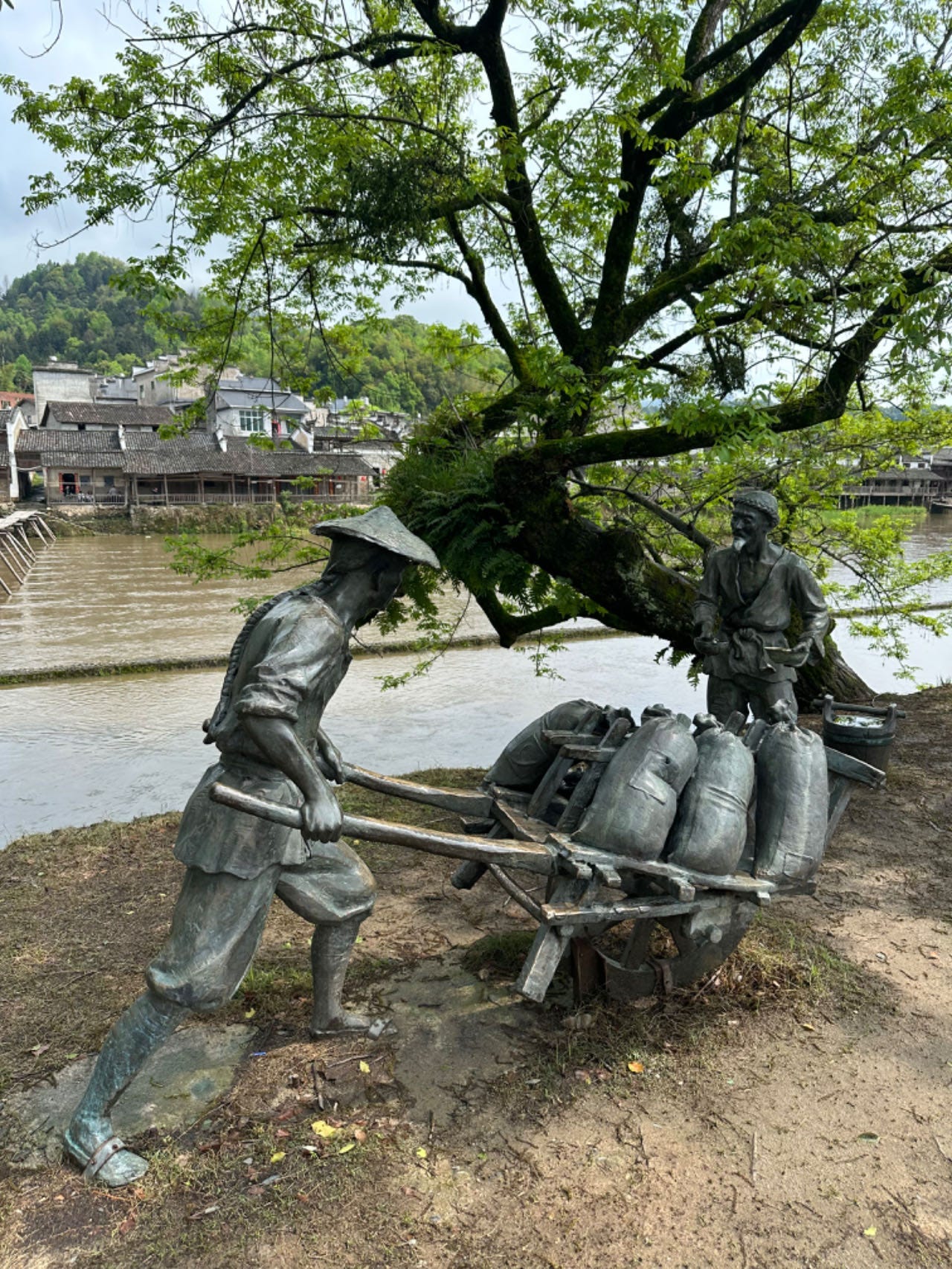
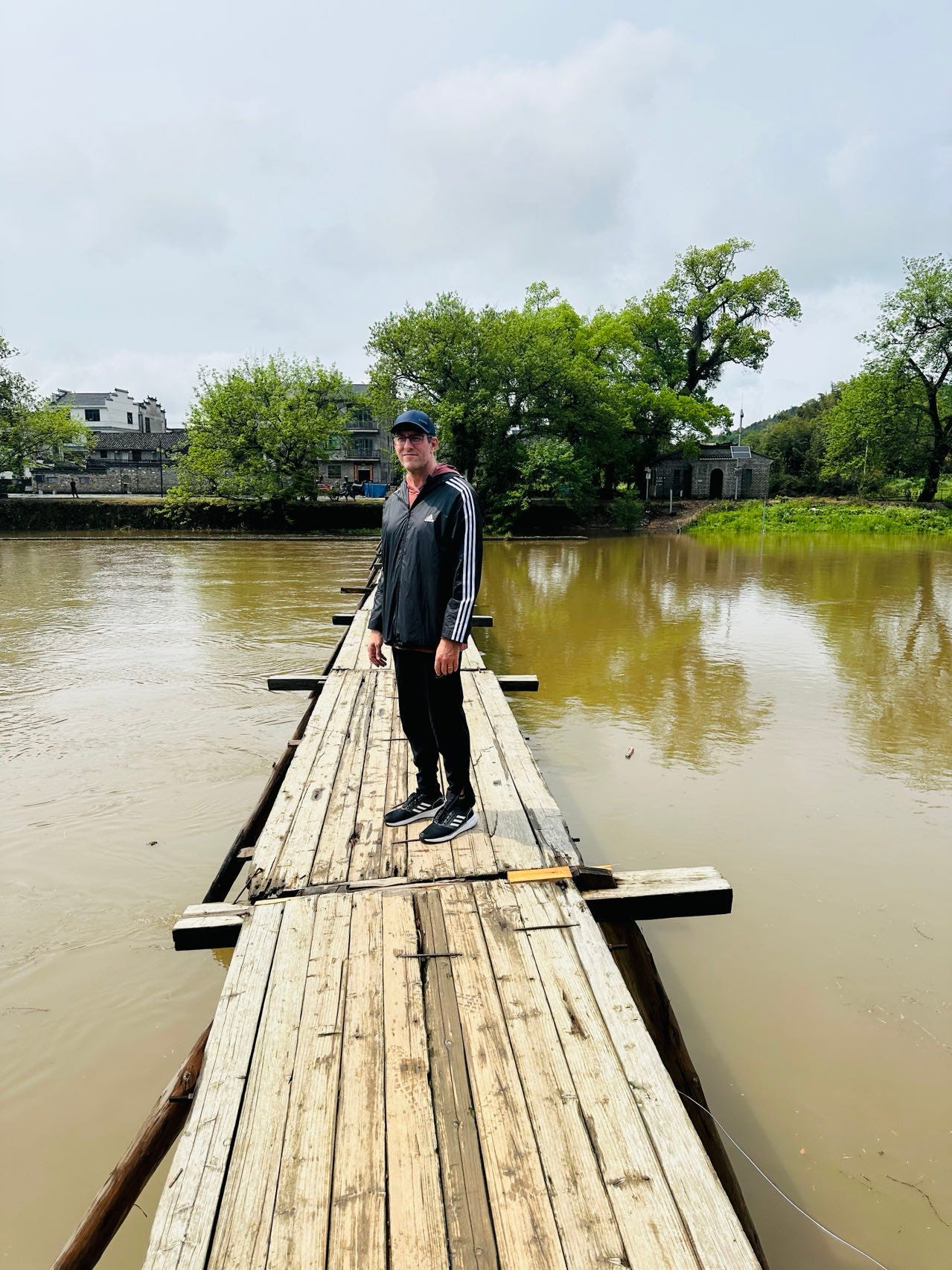
nice photos, but! some of the photos have a very bright light hurting my eyes<(。_。)>
That is one scary-looking bridge, but I love how you manage to find these "hidden" museums everywhere!